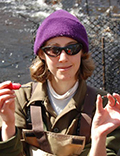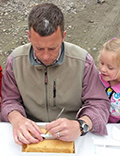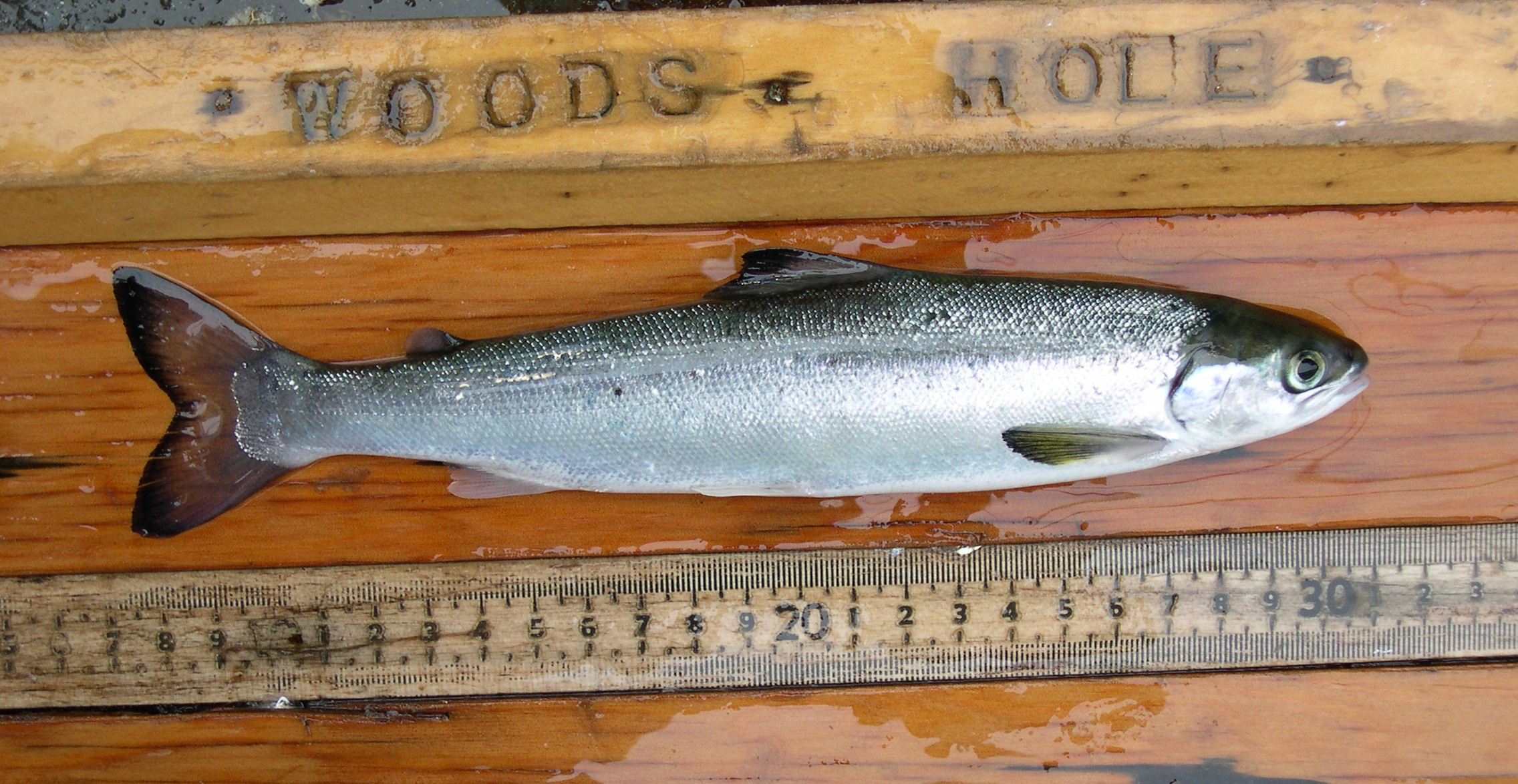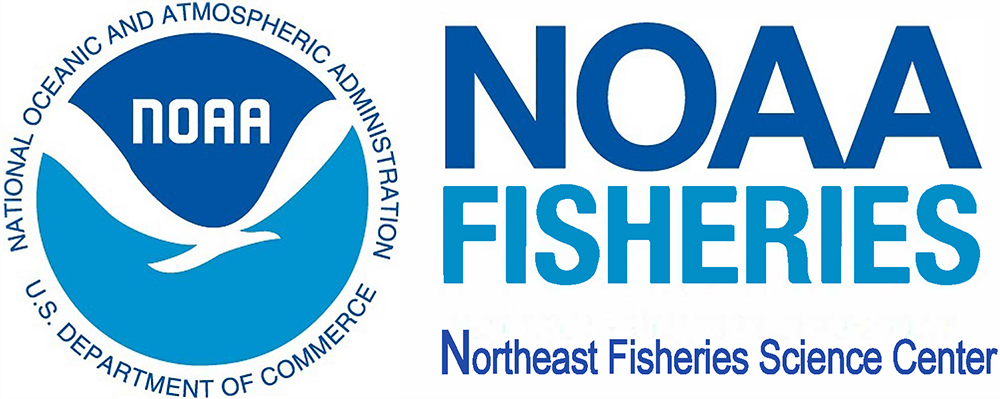Salmon
Background
Historically, Atlantic salmon were plentiful in the Northeast U.S. However, they are currently at 1-5% of those historical estimates and consequently are listed under the Endangered Species Act (ESA). As anadromous fish, Atlantic salmon face many challenges during their initial hatching and two years in freshwater nursery rivers; journey through the estuaries and development of seawater tolerance; and two year feeding migration that covers 4,000 miles of marine habitat before they return to their natal (birth) streams to spawn. Some of the pressures that Atlantic salmon face include fresh water predators, warming water, dams or barriers in the stream, and marine predation.
Scientists with the Northeast Salmon Team (NEST) from NOAA's Northeast Fisheries Science Center (NEFSC) are tasked with gathering as much information as they can on the critically endangered Gulf of Maine Atlantic salmon population. These data on the critical habitat, threats, and optimal conditions required for sustainability and recovery of the species are collected to inform the team making management decisions in the hopes that the population will recover and eventually become self-sustaining.
In this lesson, students focus on the journey the salmon smolts take as they migrate "downstream" to the ocean. Students work with real telemetry data and see the various challenges these fish face on their perilous journey, the information gained from telemetry data and how we can use that information in salmon conservation. The lesson also focuses on the challenge of obstructions such as dams or roads. Not only do the fish have to either swim around the obstacle or through turbines but also artificially created pools in the river can disorient the fish and lead to increased predation as larger fish "lay in wait" for the salmon. The activity focuses on the issues with dams, asks the students to design a hydroelectric dam and bypass solution, and discusses current solutions being utilized.
Lesson Plans
Grades 5-8
Activity Sheets/Handouts
Activity 1: Telemetry Map, Data & Sheets
Alt. Activity 1: Map, Spinner & Sheets
This lesson meets the following Next Generation Science Standards:
- Grades 5-8:
- ESS3 - Earth and Human Activity - Students will learn how human actions have affected salmon habitat and how individuals and communities have responded to the problem to protect salmon and their habitat. They will design a method for monitoring and minimizing a dam's impact on salmon migration.
- ETS1 - Engineering Design - The students will define the problem caused by dams in the river ways, define criteria for a successful bypass, try out multiple solutions as a group and as a class, and then evaluate the effectiveness of each design.
- Grades 6-8:
- LS1 - From Molecules to Organisms: Structures and Processes - Use empirical evidence to show how salmon behavior impacts the probability of successful reproduction.
- LS2 - Ecosystems: Interactions, Energy and Dynamics - Construct an argument supported by empirical evidence that changes to the physical and biological components of the riverine ecosystem have affected Atlantic salmon populations.
Additional Resources
- NOAA Fisheries - Atlantic Salmon Ecosystems Research: This website has important information about the work being done by the group that partnered in designing this lesson and contributed data.
- NEFSC Salmon Team: Kid's Page: Additional education, outreach and events from the Atlantic Salmon Ecosystems Research Team.
- NOAA Fisheries Atlantic Salmon species page: Read all the facts about Atlantic Salmon and get information on management efforts.
- Salmon in the Classroom: This outlines the "Salmon Game". This details a very active game that illustrates the many challenges salmon face as they migrate out to sea. It gives you follow up ideas as well as introductory activities.
- NOAA Fisheries: Westcoast: NOAA's West Coast Region education and outreach page.
- USDA Kids corner: Lots of fun stuff to do in the kids corner from the Pacific Northwest Region Forest Service.
- NOAA video: Watch this short and informative video made by our NOAA folks that gives a summary of the Atlantic Salmon status.
- NOAA Fisheries, GARFO: This is a link to NOAA's Greater Atlantic Region (GARFO) site listing the dangers posed by dams.
- Maine Fish Friends: This is a great resource for classroom teachers in Maine and has some great facts and resources for everyone.
- NOAA Fisheries: Endangered Species Act (ESA): Information on the endangered species listing.
This program is a collaboration between the NOAA Northeast Fisheries Science Center and Woods Hole Sea Grant.
Scientist Spotlight

Marine Resource Specialist
Woods Hole Sea Grant and Cape Cod Cooperative Extension
Abigail works with river herring in Massachusetts to track mortality and migration.

Research Fishery Biologist
Northeast Fisheries Science Center
Jim uses telemetry tags in salmon smolts to monitor their movements and mortality rates.




